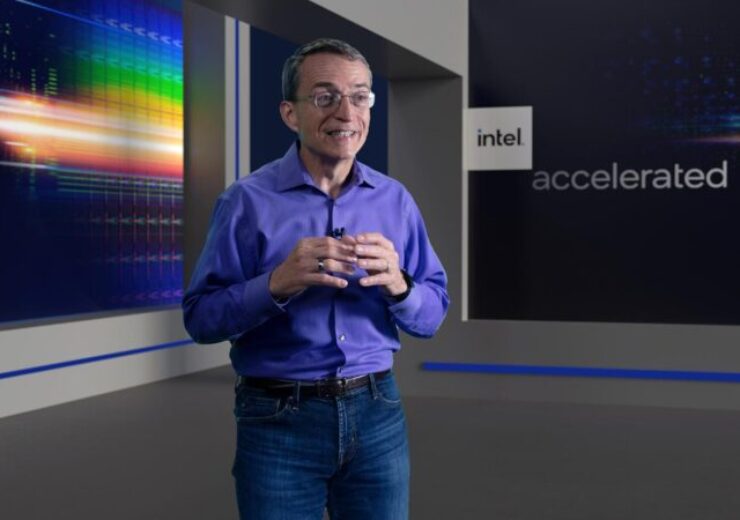Intel’s factories to manufacture chips for Qualcomm using the Intel 20A technology

Intel CEO Pat Gelsinger during the Intel Accelerated event. (Credit: Intel Corporation)
Intel revealed that Qualcomm and Amazon will be the first major customers of Intel Foundry Services (IFS), the chipmaker’s newly launched foundry business.
The company also unveiled its roadmap of process and packaging innovations that are expected to power the next wave of products through 2025 and beyond.
According to Intel, the company’s factories will begin manufacturing chips for Qualcomm using the Intel 20A process technology.
The 20A process features two new technologies in the form of RibbonFET and PowerVia. RibbonFET is a transistor architecture designed for delivering quicker transistor switching speeds while achieving the same drive current when compared to multiple fins, in a lesser footprint.
PowerVia is an implementation of backside power delivery, which will streamline signal transmission by removing the need for power routing on the wafer’s front side.
The Intel 20A technology is anticipated to be ramped up in 2024, said the company.
Meanwhile, Amazon Web Services (AWS), an Amazon company, will be the first customer that will employ the packaging solutions of Intel Foundry Services.
Intel had announced the launch of its new foundry business as part of CEO Pat Gelsinger’s unveiling of the company’s IDM 2.0 strategy in March 2021.
At that time, Gelsinger said that the company will invest nearly $20bn for constructing two new semiconductor fabs in Arizona, US. The fabs will not only address the increasing requirements of the company’s current products and customers but also meet committed capacity for foundry customers.
The company also revealed that beyond Intel 20A, it has the Intel 18A technology in development for early 2025. Intel 18A is expected to see refinements to RibbonFET for delivering another significant jump in transistor performance, said the company.
Gelsinger said: “Building on Intel’s unquestioned leadership in advanced packaging, we are accelerating our innovation roadmap to ensure we are on a clear path to process performance leadership by 2025.
“We are leveraging our unparalleled pipeline of innovation to deliver technology advances from the transistor up to the system level. Until the periodic table is exhausted, we will be relentless in our pursuit of Moore’s Law and our path to innovate with the magic of silicon.”
Intel also said that it is engaged in defining, developing, and deploying next-generation high numerical aperture (high NA) extreme-ultraviolet lithography (EUV). The chipmaking giant expects to get the first production tool in the industry.
The company revealed that it is working closely with Dutch semiconductor company ASML for assuring the success of the industry breakthrough beyond the present generation of EUV.


